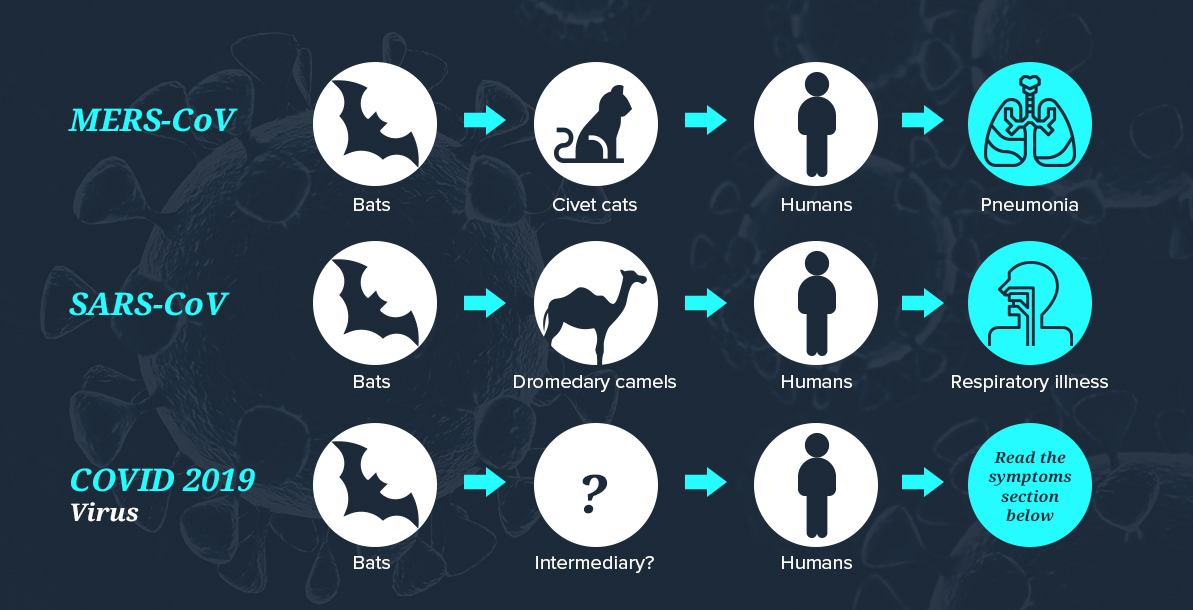Barely healed by the impact of BREXIT and skills shortages, businesses are now bound to suffer from the disruption caused by the CoVID-19 threat.
Here, your organisation’s crisis management capability will be tested, severely!
If not completely mitigate, but to at least keep the loss at minimal, SMEs and large enterprises must take necessary steps to develop an effective business continuity plan and ensure they endure this global pandemic over the subsequent period.
This video highlights the steps you must take to ensure business longevity amidst COVID-19 crisis. Valuable inputs concerning leadership communication, training and performance management, and readiness for a future workplace and a new normal are provided by globally known business experts Kevin Green, Angela Cripps and Ian Knowlson.
This contingency plan should cover:
- Cost Control
- Cash flow and liquidity management
- Pivoting operations and introduce new services to meet current demand
- Flexible working implementation
- Maintain client and employee experience
- Leverage the power of data and analytics to define employee KPIs and take up the output-focused approach
- Revisit training & performance management priorities
- Maintain internal team and client communication
Understanding CoVID and its potential impact should help you prepare this plan better. So, here’s a brief bit of information for your reference.
What is Coronavirus?
The 2019 Novel Coronavirus, aka COVID-2019, is a new type of coronavirus disease that surfaced in Wuhan, China right around the end of 2019.
Typically, coronavirus is a family of virus that causes diseases in animals. Although they are zoonotic in nature, most types of these viruses have not infected humans yet. However, the two strains – Middle East Respiratory Syndrome (MERS – CoV) and Severe Acute Respiratory Syndrome (SARS-CoV), and the new COVID- 2019 virus can severely infect humans.

MERS-CoV and SARS-CoV originated from bats, who then spread it to the intermediary animals, subsequently infecting humans.
The new virus was named Severe Acute Respiratory Syndrome Coronavirus 2 (SARS-CoV-2) by the International Committee on Taxonomy of Viruses (ICTV) on 11th Feb 2020. The virus is genetically related, albeit still different, to the SARS coronavirus of 2003. Since the name SARS results in fear, especially in the Asian population that was gravely affected by the SARS outbreak in 2003, WHO now refers to the virus as “the COVID-19 virus”.
How did the COVID-2019 outbreak happen?
World Health Organisation (WHO) was alerted to strange cases of pneumonia in Wuhan, China, on 31st December 2019. The source of this new outbreak was traced to seafood and live animal market, also referred to as Huanan Seafood market in Wuhan.
The market was closed immediately, and a new coronavirus was identified in the subsequent week, called as novel coronavirus or nCoV. More cases were recorded in Thailand and Washington in January.
On January 30, 2020, the WHO declared a global public health emergency.
Symptoms of Coronavirus
The symptoms of CoVID-2019 may include:
- Mild/Severe Fever
- Cough
- Shortness of breath
The above symptoms may take 2-14 days to appear after getting exposed to the CoVID-19 virus.
Note that older people and patients with a weak immune system or suffering from pre-existing ailments such as diabetes, and heart and lung disease have a high probability of catching CoVID-2019 disease.
How does CoVID-19 virus spread?
The 2019 Novel Coronavirus spreads (or has been spreading) mainly as follows:
- Respiratory droplets produced through the cough or sneeze of an infected person landing in the mouth or inhaled into the lungs of another person in proximity.
- Touching any surface or object with the virus on it and then touching their mouth, nose or eyes.
These are the two ways the CoVID-19 virus has been spreading quickly through the community in the affected geographies. Italy, France, Iran, South Korea, Spain, Germany, Norway, USA, Thailand, and Vietnam are among the countries profoundly affected by the virus spread.
Precautions you should take against it
The person with the virus may not show any visible signs but could still serve as a medium for virus transmission. Therefore, it’s crucial you take the following precautions to safeguard yourself from contracting the coronavirus disease, and most importantly, prevent community spread:
- Keep a distance between yourself and the others. Avoid crowds. This step is vital to prevent person-to-person spread.
- At public places, avoid touching high-touch surfaces such as elevator buttons or handrails and maintain social distance, especially from people who are sick. Note that social distancing doesn’t mean you put yourself in isolation. Stay in touch with others through phone or emails.
- Wash your hands with soap and water more often. If soap and water aren’t available, always carry a hand sanitiser (60% alcohol at least) with you. Avoid touching your face.
- Cancel or postpone non-critical travel plans.
- Stay home, and make sure you clean and disinfect your home as part of your daily routine.
- Stock yourself with adequate groceries, non-perishable food, household items and medical supplies. Don’t overstock, and give a thought to ones who may need support as well.
- Keep a check on your health. If you experience any symptoms mentioned above, consult your doctor and get medical attention immediately.
As Jürgen Klopp, manager of Liverpool Football Club (LFC) rightly stated that one must put people’s health first, show compassion and care for the vulnerable. This statement was further reiterated by Tedros Adhanom, Director-General of the World Health Organisation (WHO).
How should Businesses and Employers respond to CoVID-19 threat?
Safeguarding employees’ health and wellbeing, and taking adequate measures to prevent the virus from spreading should be the main focus of employers’ response.
-
- Maintain workplace hygiene. Ensure the surfaces and objects are wiped clean with disinfectant.
- Put hand sanitiser in prominent places all around the workplace.
- Ensure that your staff receives guidance on health and safety measures from health and safety personnel.
- Provide face masks and tissues to your employees, especially the ones with runny nose or coughing at work.
- Encourage employees who even show mild symptoms (mild fever or cough) to stay home and self isolate.
- Introduce policies that are flexible and non-punitive in nature, allowing employees to take sick leaves to look after themselves or their ill family members. A special leave policy that enables employees to take paid or unpaid leaves would be a welcome move. While few would be open to taking unpaid leaves, not all employees can cope with such a financial setback. If your business can’t afford to provide unpaid leaves, find an alternate solution such as shorter working hours or flexible working practice, or communicate it (clearly and with empathy) to your employees.
- Develop a contingency business continuity plan to prepare your organisation to endure the local community outbreak. This plan should focus on implementing a setup to keep your business running in case a large number of employees and clients remain unavailable because of the pandemic outbreak.
- Communicate every step that encompasses your Business Continuity Plan (BCP) to your employees, clients and vendors to make sure they are aware of what they need to do under the plan and are on the same page as you are.
- If you need to take tough calls such as furloughing or laying off employees, do it with honesty and empathy. Help them understand that it’s not their fault, but it’s what the business needs to do to survive, and you’d prioritise hiring them once the crisis passes. With such a transparent communication, your employees will be willing to work with you again.
- You must pivot your operations and processes to continue to operate in the current crisis. Many automobile companies such as Ford and General Motors pivoted their operations to manufacture face masks, ventilators and respirators.
- A practice that most businesses are implementing is offering work-from-home to their employees. Provide adequate resources to your employees as well to help them work efficiently from home.
- If your team is going to work remotely, you must take up the output-focused approach and define their KPIs.
- Implement an internal communication plan to make sure the teams stay connected and stay updated with the situation in your organisation.
- In case the majority of your employees are unable to work from home, your organisation must be ready to operate with a skeleton staff. Identify critical areas of the business and employees with the necessary skills to perform them. Identify personnel who can wear multiple hats, i.e., can perform numerous functions. Train additional employees if needed.
- In this challenging hour, it is vital that you share the best practices with other companies in your community.
Take note that government, banks and finance companies are offering support to businesses getting impacted by CoVID-19 spread.
We understand that not all employers can afford to implement the below-mentioned recommendations. Still, we encourage you to give a thought to your employees’ wellbeing and offer as much flexibility as you can.
COVID-19 crisis has hit the economy hard, it has hit the jobs market hard, and recruitment businesses are facing unprecedented challenges at present. QX COVID Support for recruitment agencies aims to help you survive, even thrive, through the pandemic.
With QX RPO support, you can cut cost, reduce infrastructure and resource intensive-investments, control scalability and focus more on what you do best – focus on top line without worrying about admin and support tasks.
In this unprecedented time, let’s work together.
QX RPO is here to help!
Note that the above information regarding the coronavirus disease comes from reliable, authoritative sources:











